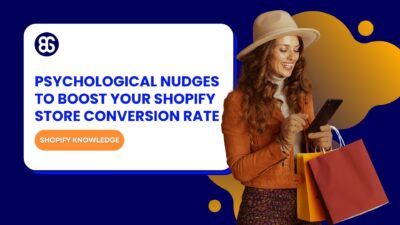
3 Simple Psychological Nudges To Boost Your Shopify Store Conversion Rate
The “Add to Cart” click is a good start, but high cart abandonment rates-70-80%-prove the completed purchase is the...
![A Deep Dive into Shopify Checkout Conversion Rate [2025]](https://bogos.io/wp-content/uploads/2024/09/shopify-checkout-conversion-rate-guide.jpg)
Digital Marketing Specialist
Shopify checkout conversion rate is a critical metric that shows how many customers complete their purchases after adding items to their carts. In this article, we’ll explore what it means, how to calculate it, and why Shopify has the best checkout process in the world.
You’ll also learn about the factors affecting this rate and tips to improve it. Whether you’re a store owner or just curious, understanding Shopify’s checkout conversion rate can help boost your sales in 2024.
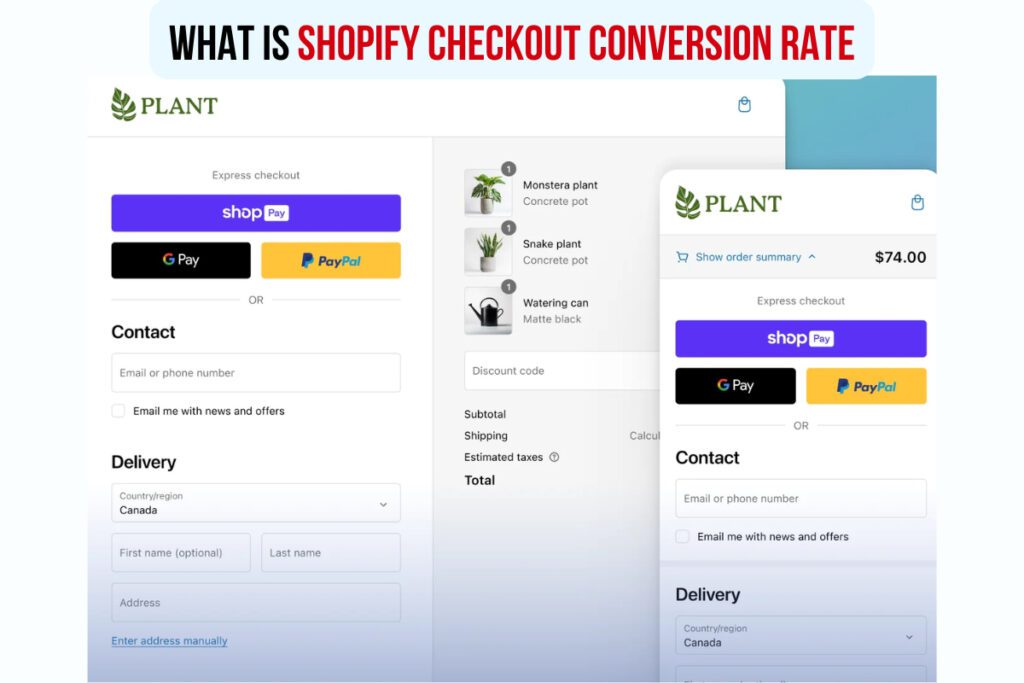
The Shopify checkout conversion rate is the percentage of customers who complete their purchase after starting the checkout process on a Shopify store. Simply, it measures how many people buy something after adding items to their cart and reaching checkout.
A study by a top global consulting firm shows that Shopify’s checkout converts up to 36% better than its competitors, with an average increase of 15%. Here’s why Shopify stands out:
Shopify’s Shop Pay offers an unrivaled one-click checkout experience thanks to its network of over 100 million users. This identity-driven system allows Shopify to recognize customers instantly, even when they’ve used Shop Pay elsewhere before.
Because their details are already saved, customers can check out up to 4 times faster than when using guest checkout. This ease of use has been shown to boost conversion rates by as much as 50% compared to standard checkouts.
The future of commerce is leaning heavily toward identity-driven checkout systems like Shop Pay, which minimize user friction and lead to a higher overall conversion rate.
Shopify is a powerhouse in e-commerce, accounting for about 10% of all U.S. online retail sales. In 2022 alone, Shopify processed over $500 billion in Gross Merchandise Volume (GMV) and supported over 561 million unique shoppers.
The sheer volume of transactions allows Shopify to improve its checkout process constantly based on massive amounts of data. Whether optimizing button placements or reducing the number of fields in the checkout form, these incremental improvements result in faster and more seamless shopping experiences for users.
During peak sales events, like Black Friday or Cyber Monday, Shopify handles sales traffic that would overwhelm most platforms. In 2022, Shopify’s checkout processed $3.5 million in sales per minute without disruptions, showcasing the platform’s ability to scale effectively for businesses of all sizes.
Trust is a major factor in Shopify’s checkout success. The platform’s sleek and intuitive design, combined with its options for discounts, gift cards, and delivery options, makes it immediately familiar to customers.
This sense of trust has been built over years of consistent performance, leading hundreds of millions of people to use Shopify Checkout regularly. Brands like Spanx emphasize that their customers trust Shopify Checkout as much as they trust the products they buy, directly impacting conversion rates.
Additionally, Shopify integrates options that enhance the customer experience, such as Shop Pay Installments and Shop Cash, making the checkout even more appealing and boosting conversions.
Shopify stays ahead by constantly innovating. The platform employs more engineers on checkout than some companies on their e-commerce solutions.
This ongoing commitment to improving the checkout experience has led to features like one-page checkout and Checkout Extensibility, which lets brands customize their checkout flow. Businesses can adjust everything from payment options to shipping methods, offering a personalized experience that customers love.
Shopify’s focus on customization allows businesses to tweak the checkout process to fit their unique needs. For example, they can add custom fields, loyalty programs, or even upsell offers directly in the checkout flow.
Shop Pay, Shopify’s flagship one-tap payment solution, significantly impacts conversion rates. When businesses implement Shop Pay, conversions rise by as much as 50% compared to guest checkout.
Additionally, Shop Pay can increase mobile conversion rates by 91% and desktop conversion by 56%, proving its value in today’s mobile-first shopping landscape.
With faster load times, stored payment details, and instant recognition of customers, Shop Pay dramatically reduces friction, leading to more completed purchases.
In general, Shopify’s checkout process is fast, simple, and trusted, making it the best in the e-commerce world. With its strong identity network, large scale, commitment to innovation, and the power of Shop Pay, Shopify offers a checkout experience that keeps customers coming back.

The Shopify checkout conversion rate formula can be expressed as:
This formula measures how many customers finish their purchase and how many start the checkout process. For example, if 100 people begin checkout and 20 complete their purchases, the conversion rate is:
Checkout Conversion Rate = (20 / 100) * 100 = 20%
This simple calculation helps track your checkout process and is effective at converting potential buyers into paying customers.
Shopify stores’ average checkout conversion rate typically ranges between 1.5% and 2.5%. Newer or less optimized stores often fall into the 1-2% range, while more established stores with well-designed, streamlined checkout processes may reach rates around 3-4%.
Optimized stores with strong customer trust and easy checkout experiences can sometimes see even higher rates.
A “good” checkout conversion rate for a Shopify store varies by industry and customer base. However, generally, a 2% to 5% rate is considered solid. Well-optimized stores with effective checkout processes, clear calls to action, and minimal friction during purchase can see conversion rates above 5%.
If your rate is under 2%, improving areas like checkout simplicity, mobile optimization, and building customer trust is worthwhile.
Read more: 18 Best Shopify Apps To Increase Sales & Conversion Rates
When aiming to improve your Shopify checkout conversion rate, several factors come into play. These are some of the most critical aspects you can optimize, along with practical tips to help boost Shopify conversion rates and reduce cart abandonment.
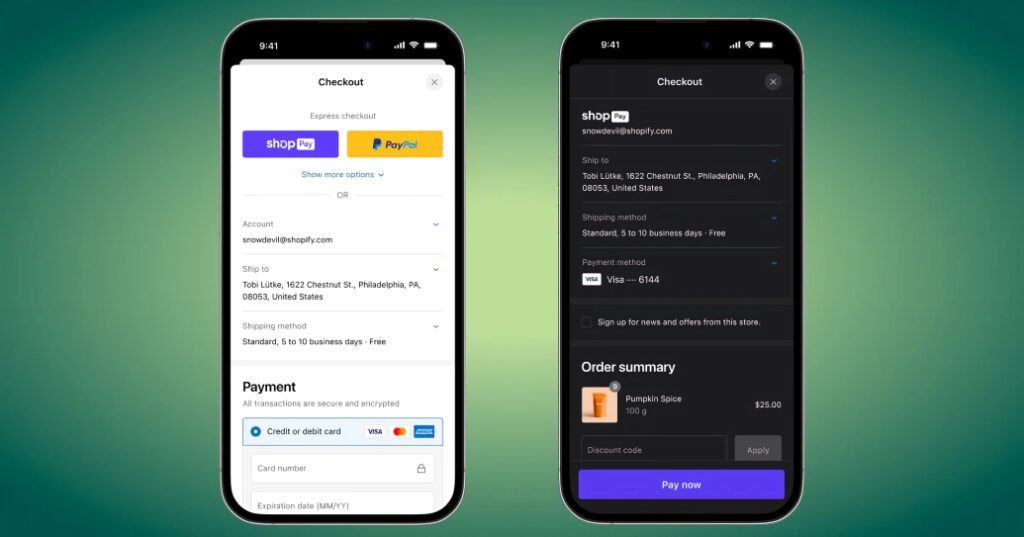
In today’s mobile-first world, more than half of eCommerce traffic comes from mobile devices. If your checkout process isn’t optimized for mobile, you risk losing a large portion of potential customers.
A mobile-optimized checkout ensures that the entire experience is seamless across devices, allowing users to complete their purchases without unnecessary friction.
Tips:
Read more: Best Shopify Apps to Increase Conversions in 2025
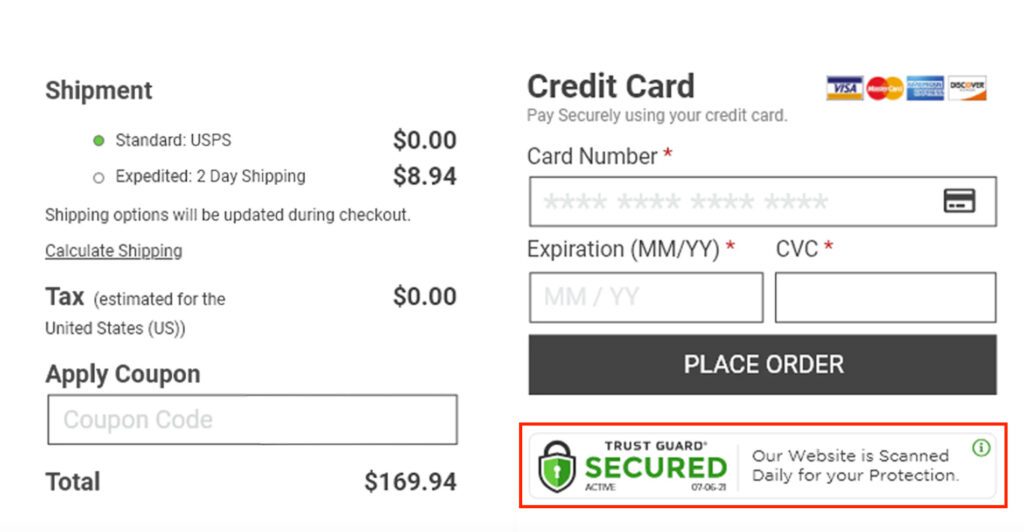
Trust is crucial when it comes to online shopping. Consumers are wary of sharing sensitive information, especially payment details. If your store does not provide enough trust signals during checkout, it can lead to abandoned carts.
Tips:
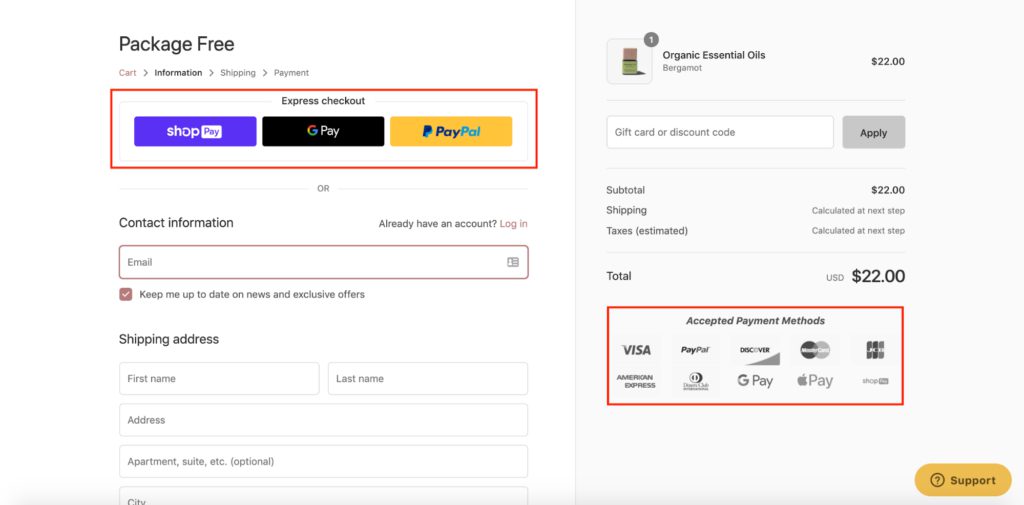
A limited selection of payment methods can result in lost sales. Customers expect flexibility when it comes to payment options. Offering only one or two payment methods can frustrate users, especially if their preferred option is not available.
By providing multiple payment methods, you make it easier for a wide variety of customers to complete their purchases.
Tips:
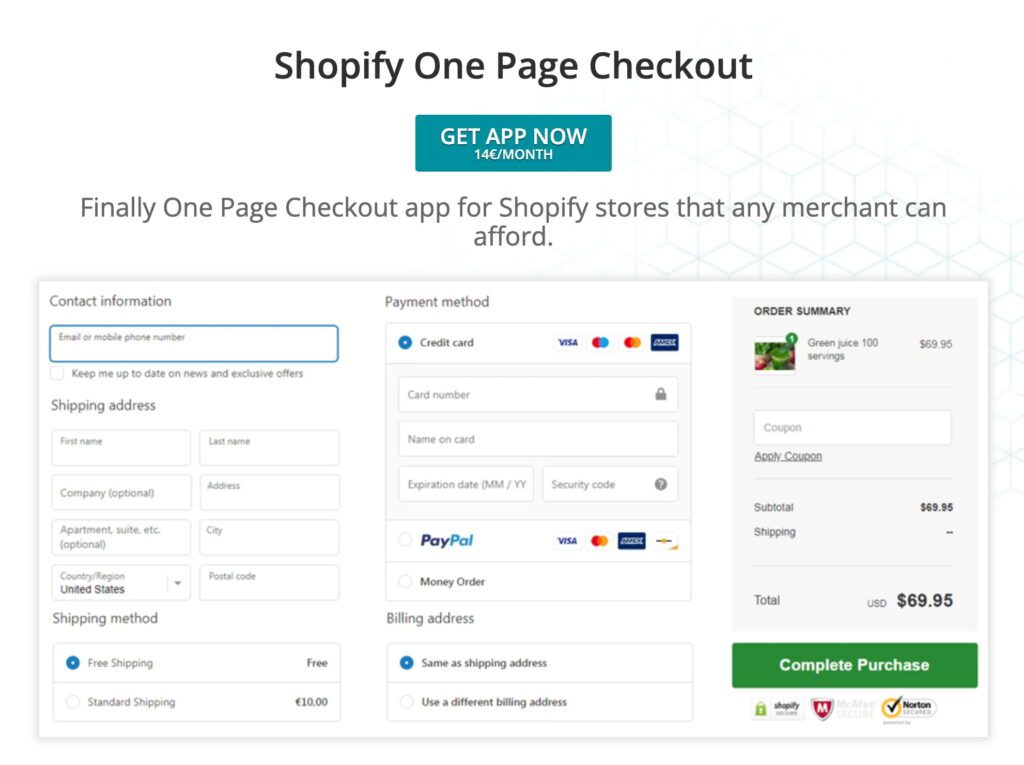
The checkout process is one of the most critical stages where customers often abandon their carts. Simplifying this process can dramatically improve your conversion rate. Shopify offers both a standard multi-step checkout and a newer one-page checkout, with the latter reducing friction for customers by consolidating all checkout steps onto one page.
One-Page Checkout: This format simplifies the checkout experience by presenting all necessary information – cart details, shipping, billing, and payment – on a single page. It reduces the number of clicks and steps a customer has to take, which speeds up the process and minimizes abandonment.
Standard Multi-Step Checkout: While this approach may be more suitable for businesses that require more detailed order verification or shipping options, it can sometimes frustrate users who prefer speed.
Tips:
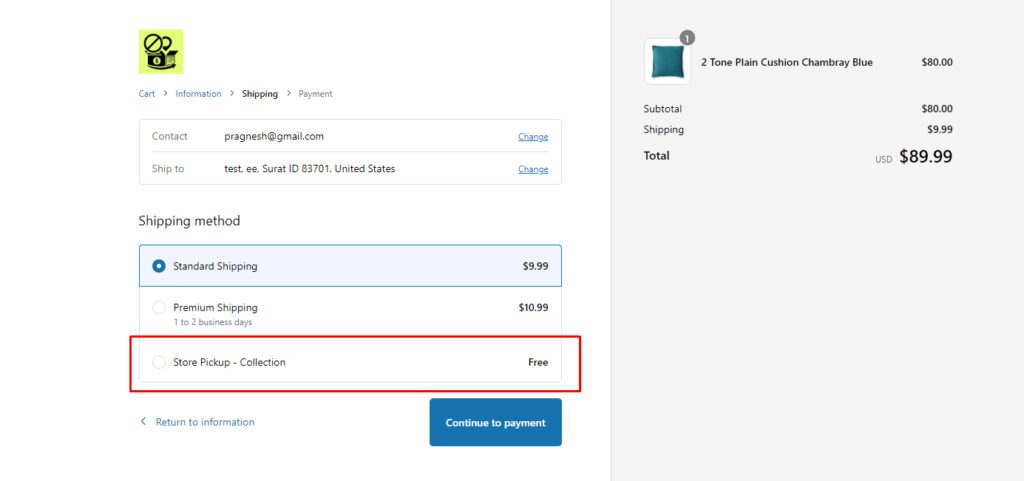
Unexpected shipping costs are one of the top reasons for cart abandonment. Customers often abandon their purchases if the shipping fees are too high or are not shown until the final step of checkout.
Tips:
In conclusion, understanding and improving your Shopify checkout conversion rate is key to driving sales and customer satisfaction. By optimizing for mobile devices, building trust through signals, offering a variety of payment options, and simplifying the checkout process, you can create a smooth experience that encourages more customers to complete their purchases.
I hope you find these tips helpful as you work to enhance your Shopify store’s performance and boost conversions in 2024.
A good Shopify checkout conversion rate is typically between 2% and 5%, though top-performing stores may achieve rates higher than 5%. Anything below 2% suggests there is room for optimization.
The average checkout conversion rate on Shopify is around 1.5% to 2.5%. Newer stores may have lower rates, while more established and optimized stores see higher rates.
Low conversion rates can be caused by factors like a slow website, complicated checkout processes, high shipping costs, or lack of trust signals like SSL certificates and recognizable payment methods.
To improve your conversion rate, optimize mobile checkout, simplify the process by using a one-page checkout, offer multiple payment methods, display trust signals, and ensure transparency about shipping costs.


The “Add to Cart” click is a good start, but high cart abandonment rates-70-80%-prove the completed purchase is the...
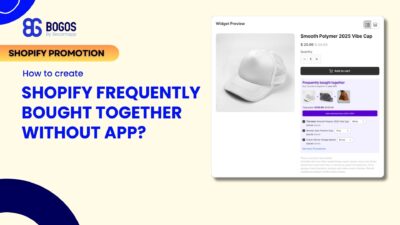
Shopify frequently bought together recommendations can boost your average order value by 10-30% by showing customers complementary products they’re...
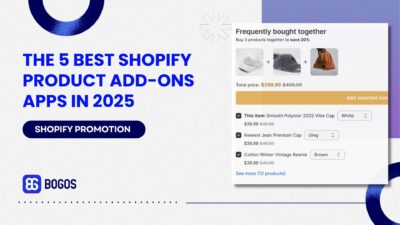
Summary Is your Shopify store making the most of product add-ons? Upselling add-ons is one of the most effective...
